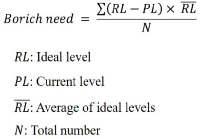
Purpose This study was designed to develop a curriculum for pre-service golf coaches at universities to enhance the coaches’ competencies to counsel athletes on the field. Methods This study was conducted in accordance with the revised and supplemented procedures for the national competency standard (NCS) based curriculum development outline under the level of application of individual instruction-level classes among the types of curriculum development. Results The results were as follows: First, the elements of the counseling competence were guided by conflict resolution counseling, psychological skills training, guidance counseling, coordination and Intervention, and relationship formation. Second, the curriculum was adopted as a curriculum for sports psychology, theory and practice of counseling, counseling practice and super-vision, and psychological skills training, and non-disciplinary activities were participation in group and personal counseling, and an open counseling case study. Third, the feasibility of the curriculum was calculated in the range of 0.8 to 1.0 for all areas to be reasonable. Conclusions The results of this study have structured the counseling competencies required for pre-service golf coaches. Based on this, the results of the study suggest counseling courses in the curriculum of university. This is expected to ultimately seek to improve the coaching field by enhancing the capacity of the coaches.



PURPOSE This study investigated the correlation between anaerobic power and maximum muscle strength in relation to core muscle strength among Korean national golfers. METHODS A total of 96 national golfers (53 females and 43 males) participated in the study. Body composition was assessed using multi-frequency impedance devices, while core and lower extremity muscle strength (extension, flexion, flex/ex ratio) was measured using isokinetic strength tests. Anaerobic power was evaluated through peak power, average power, and power drop rate tests conducted on bicycle ergometers, along with one-repetition maximum (1RM) tests for squats and bench presses. Mean and standard deviation values were calculated for all variables, and linear regression analysis was performed to verify correlations, with statistical significance set at α=.05. RESULTS The comparison of physical characteristics between male and female national golfers revealed significant differences in age, height, body fat percentage, lean body mass, and weight. There was a strong correlation between core muscle strength and isokinetic lower extremity muscle strength. Additionally, a strong correlation was observed between core muscle strength and anaerobic power and between peak power and average power. Furthermore, there was a high correlation between core muscle strength and bench press and squat maximum muscle strength. CONCLUSIONS This study highlights the correlation between various professional physical fitness variables of Korean national golfers over the past decade. The findings are expected to provide valuable insights for coaches and players in developing future training programs.